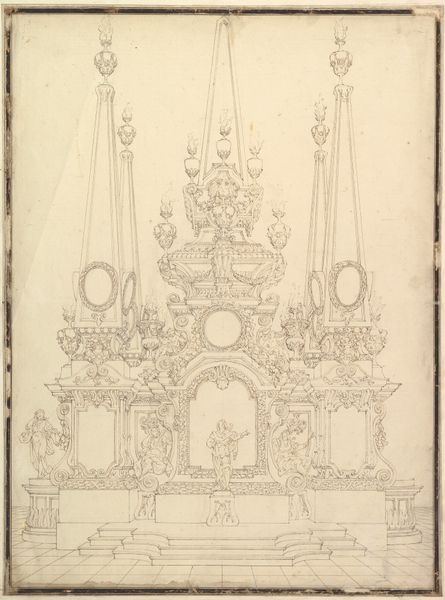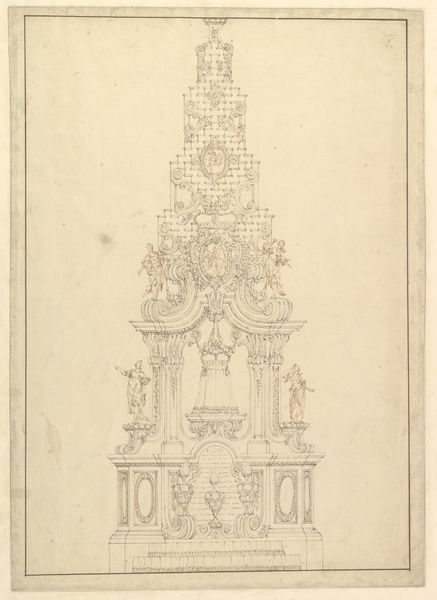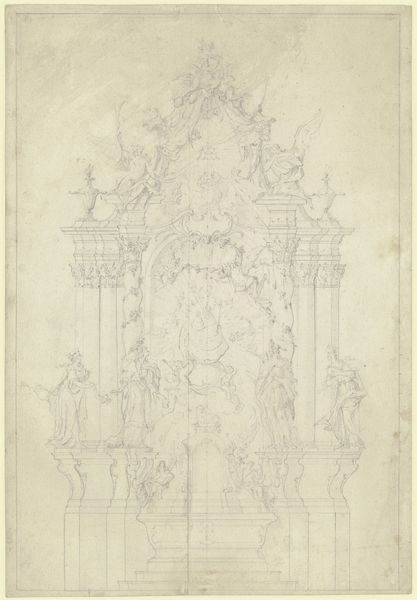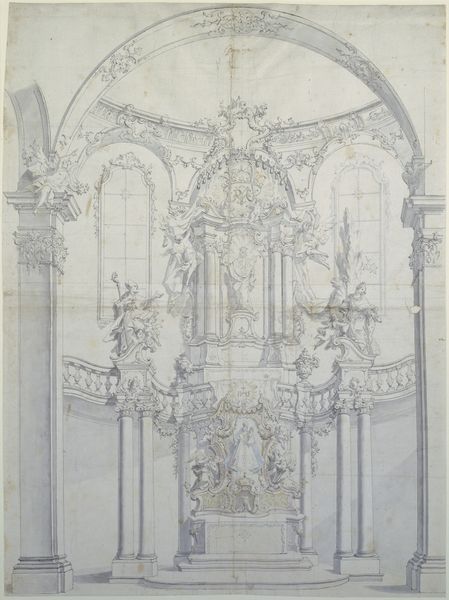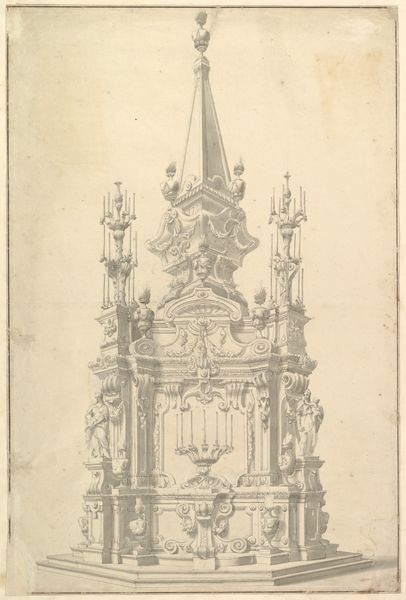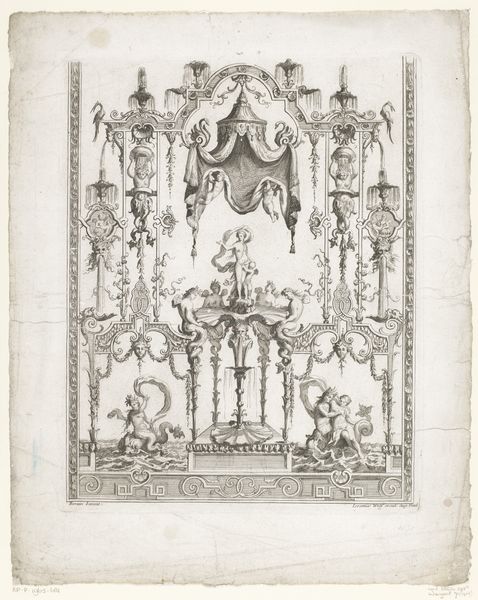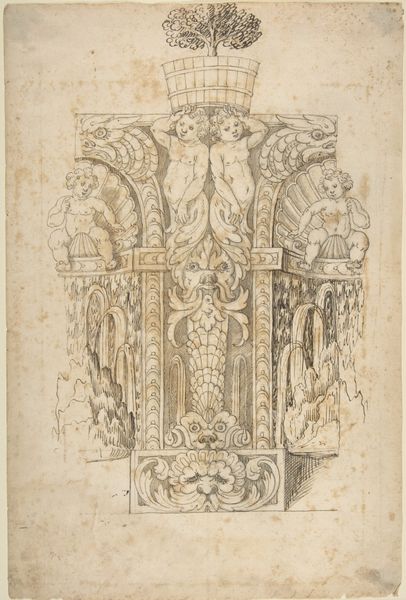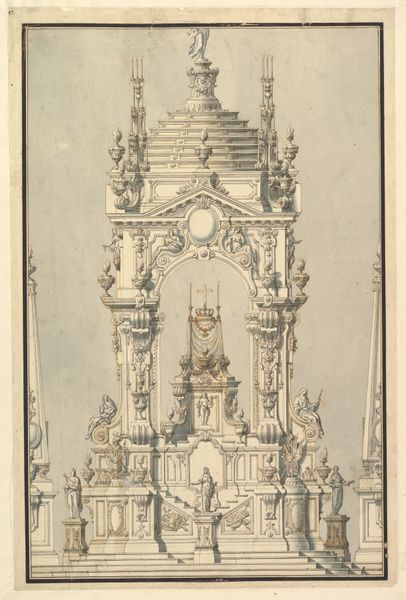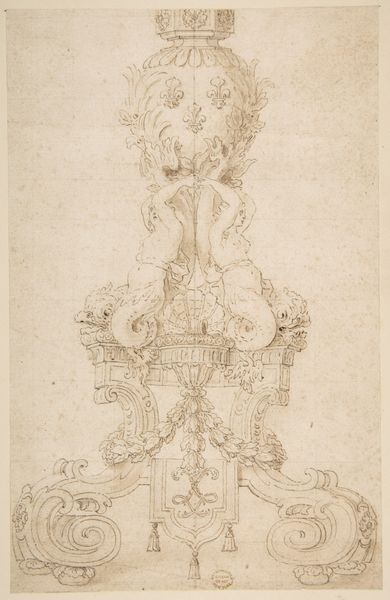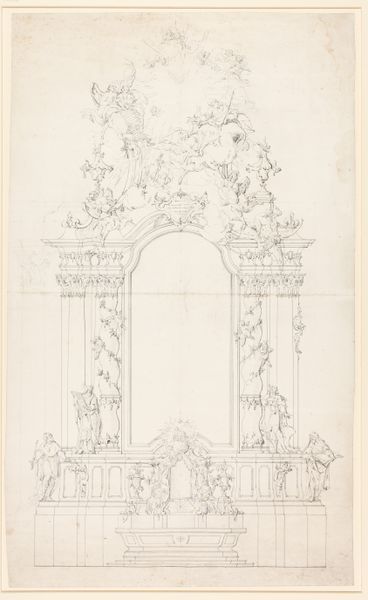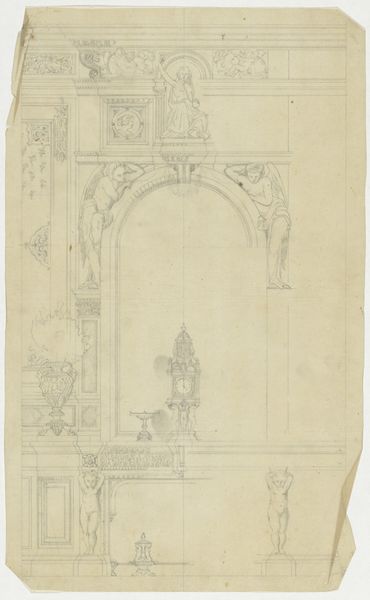
Elevation of a Catafalque: Obelisks at the Corners and One in Center 1720 - 1740
0:00
0:00
drawing, print, architecture
#
drawing
#
baroque
# print
#
form
#
geometric
#
line
#
history-painting
#
architecture
Dimensions: 23-1/2 x 17-3/8 in. (59.7 x 44.1 cm)
Copyright: Public Domain
Curator: Standing before us is "Elevation of a Catafalque: Obelisks at the Corners and One in Center," a drawing by Giuseppe Galli Bibiena, dating from sometime between 1720 and 1740. Editor: My immediate sense? Exuberant seriousness. It's incredibly ornate, but there's a distinct somberness underlying all the flourishes. Curator: Precisely. As a theatrical designer, Bibiena was a master of creating visually stunning and emotionally resonant spaces. The baroque style is clear—the emphasis on elaborate ornamentation and dynamic composition speaks to his background in stagecraft. Note the careful rendering; it’s both a practical architectural study and a celebration of form. Editor: The geometry is striking, isn't it? Those obelisks cutting through the frilly bits... almost a rebuke. And it’s all in fine lines, which creates a really fascinating tension between weight and delicacy. How was something like this typically used? Curator: Catafalques, as temporary structures erected for funeral ceremonies, were meant to honor the deceased, often someone of great status. Drawings such as this would have served as preliminary designs, showcasing the artist’s vision for the overall layout, as well as providing meticulous details for craftsmen. These temporary constructions functioned almost as a stage set for mourning. Editor: It makes me think about how societies perform grief. There’s the personal sorrow, of course, but also this very public, very staged display of respect and remembrance. Look at the layering of visual elements, almost like an overwhelming flood of emblems and motifs to soften death’s harsh finality. Curator: The design cleverly plays with spatial illusions; look how Bibiena guides our eyes upward with those vertical obelisks that simultaneously frame the catafalque, creating an atmosphere of grandeur and spiritual elevation. Even within a somber occasion, there's an attempt to uplift the viewer toward something greater. Editor: It's interesting, really. What starts as a visual representation of loss evolves, through geometry and embellishment, into an assertion of… not necessarily triumph, but perhaps transcendence? Even in rendering death so formally, Bibiena manages to nudge us toward some form of uplifting sentiment, however fleeting. Curator: An exceptional demonstration of art's power to reconcile emotion and spectacle, would you agree? Editor: Absolutely. It really proves how profoundly human the artistic impulse is; even when faced with mortality, there’s this compulsion to create something beautiful, to build something meaningful.
Comments
No comments
Be the first to comment and join the conversation on the ultimate creative platform.
